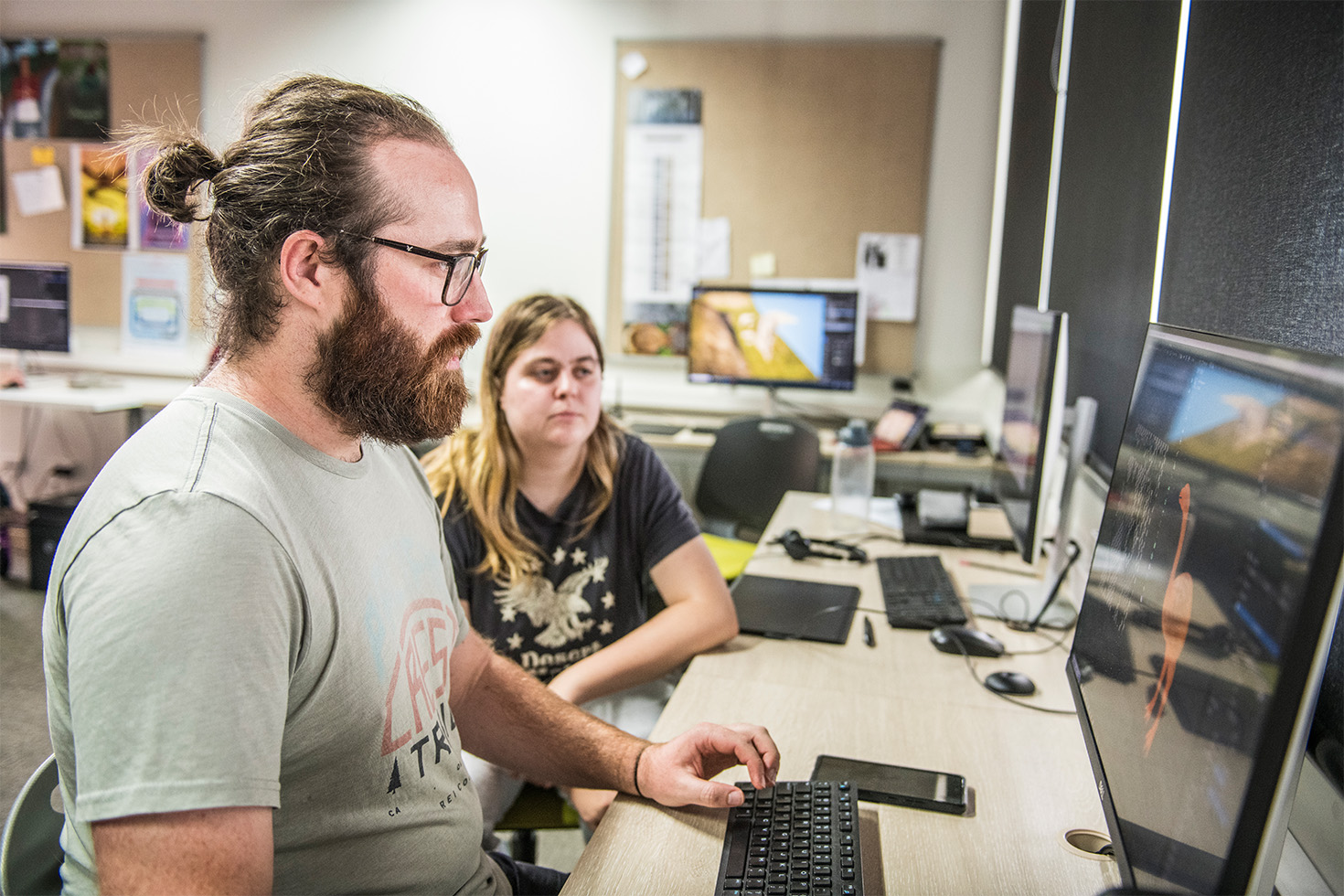Professional Practice
The Professional Practice courses prepare you for work in professional and commercial CGI studios, and as an independent contractor. Content includes business acumen appropriate for freelance work, legal considerations, statutory regulations and tax obligations and an understanding of the implications of the Te Tiriti o Waitangi for animation in Aotearoa New Zealand. A vital element for a CGI professional is the understanding of the CGI production workflow and pipeline and the ability to work collaboratively in a team-based professional environment.
3D Modelling
Modelling is a fundamental skill in CGI. The products of modelling are 3D geometric assets, which can resemble anything from creatures, characters, environments, props and abstract forms. There are two types of general approaches to modelling: soft-body and rigid-body. Soft-body modelling is for organic forms, such as creatures, characters, vegetation and other natural forms. Rigid-body modelling is used for hard structures that are not usually prone to deformation, such as man-made objects like buildings, vehicles, furniture and mechanical structures.
Rigging and Animation
Rigging is the process of preparing 3D geometric assets for animation. For example, a creature would consist of a soft-body 3D modelled asset, which would then be rigged with a ‘skeleton’ or ‘armature’.
Animation is the process of manipulating rigs inside of 3D modelled geometric assets to create movement.
Dynamic Effects
Dynamics is the process of animating complex systems of movement that would be too tedious to animate through traditional manual key-frame methods. Examples include fire, smoke, fluid, explosions, physics-based simulation and crowd-based swarming and simulation of creatures and characters.
CGI Lighting, Post-production, Real-time shading
CGI lighting, post-production and real time shading include the processes of producing photorealistic lighting, shading and rendering the 3D assets to composite them with any other elements such as live-action films and real time game engines. The product is the final cinematic scene as seen by the audience.
CGI Technical Development
CGI Technical Development is a technical avenue of problem solving CGI design challenges. Often it is necessary for CGI practitioners to develop their own tools to make up for a lack of commercial off-the-shelf solutions to unique challenges. Most tools for professional CGI feature a coding interface to accommodate the development of customised functionality; the technical development courses enable the student to take advantage of these features.
CGI Project
The CGI project courses enable the learner to work on a substantial CGI project. Students will benefit from working in a collaborative environment, negotiating consensus and producing deliverables to milestones and deadlines. Projects will be tailored to the students’ area of interest.




